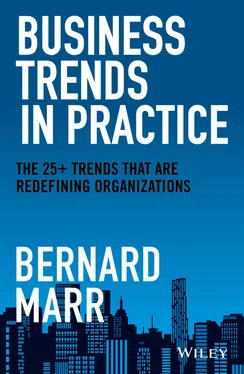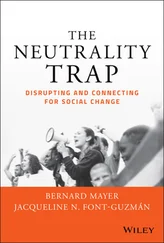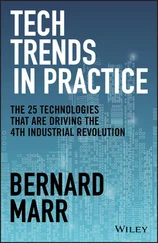36 36. 10 Mega Trends that are (re)shaping our world; Ipsos; https://www.ipsos.com/sites/default/files/10-Mega-Trends-That-are-Reshaping-The-World.pdf
37 37. Ibid.
38 38. Early Benchmarks Show Post-Millennials on Track to Be Most Diverse, Best Educated Generation Yet; Pew Research Center; https://www.pewresearch.org/social-trends/2018/11/15/early-benchmarks-show-post-millennials-on-track-to-be-most-diverse-best-educated-generation-yet/
39 39. The diversity and inclusion revolution; Deloitte; https://www2.deloitte.com/content/dam/insights/us/articles/4209_Diversity-and-inclusion-revolution/DI_Diversity-and-inclusion-revolution.pdf
40 40. Ibid.
41 41. Ibid.
42 42. 10 Mega Trends that are (re)shaping our world; Ipsos; https://www.ipsos.com/sites/default/files/10-Mega-Trends-That-are-Reshaping-The-World.pdf
CHAPTER 2 THE TEN TECH MEGA-TRENDS EVERY BUSINESS LEADER SHOULD KNOW ABOUT
We are now entering the fourth industrial revolution. As with each industrial revolution before it – steam and waterpower, electricity, and computerization – this revolution represents a huge transformational shift that will forever alter how we do business, and even how we go about our everyday lives. Driven by data, artificial intelligence and the Internet of Things (IoT, the plethora of everyday devices that are now connected to the internet), the fourth industrial revolution is essentially turning the world around us into one huge information system, which is why I often refer to it as “the intelligence revolution.”
No Ordinary Industrial Revolution
What makes this fourth industrial revolution different from the previous three is the sheer range of new technologies involved. Where each of the previous industrial revolutions were driven by one major technological advancement, the fourth industrial revolution is driven by numerous tech trends, including the increasing datafication of our world, huge leaps in artificial intelligence, the rise of cyber-physical systems (computer systems that control physical processes), and the vast spread of the Internet of Things, to name just a few examples. Each of these advancements on their own would be transformative; together, they can take us beyond anything we could imagine.
What's interesting about the fourth industrial revolution is that the unprecedented digital transformation that we've seen in recent years is being accelerated by the interaction between all these different technologies. The enormous leaps in AI, for example, have been made possible by the explosion of data, which in turn is being accelerated by the plethora of smart devices constantly generating data. These trends are influencing each other, and will continue to do so. This means, rather than the big step changes of previous industrial revolutions, this latest revolution may usher in a period of exponential growth that just carries on and on. In other words, there may not be a fifth industrial revolution; we may instead experience a continual acceleration of the fourth industrial revolution.
“Exponential growth” is a phrase you probably hear a lot, but let's take a moment to consider what it means in real terms. When I talk about the amount of data in our world growing exponentially, and the exponential growth in computing power, I'm talking about it doubling every few years – two years in the case of computing power (as per Moore's Law, which I'll talk about later), and roughly every four years for the amount of data being stored. 1
Imagine if the speed of cars developed at such a pace. Initially, the progress would seem fairly sensible, starting with 50mph then doubling two years later to 100mph. But after eight years our cars would be traveling faster than the speed of sound (767 mph). Within 50 years, we'd be driving faster than the speed of light (670 million mph). That's fast enough to take a round-trip from Earth to the Moon and back in about 2.5 seconds. Clearly, such pace of change isn't happening in the automotive industry, or other industries for that matter. And that's what makes the pace of digital change so startling. It's something we've never seen before, and it's almost impossible to imagine this pace continuing. But that's precisely what may happen. There's no limit to what these technologies can achieve.
Crucially, these tech trends, which are all mingling and mixing together, will disrupt every industry, every organization (big and small), and even many aspects of society. This is why business leaders need to understand these trends and plan for their potential impact. In this chapter, I outline 10 technology mega-trends that will separate the successful businesses of the future from those that get left behind. Each of these trends deserves a book in its own right (indeed, I've written entire books on many of these trends). So consider this a whistle-stop tour – something to get you thinking about the future of your organization, and specifically how your business might use these trends to drive success.
Trend 1: Ubiquitous Computing
Digital technology is more readily available and more powerful than ever before. Let's take a quick look how we got here, to the point where computers are all around us, and see what's in store for the future of computing.
Advances in computing power
As processing power has increased and the size of computer microchips has shrunk, most of us have become used to computers and devices getting smaller, lighter, cheaper, and more powerful. Indeed, the average smartphone today is more powerful than the supercomputers of 10 years ago.
Moore's Law states that the number of transistors on a microchip doubles every two years, thus doubling the speed and capability of computers every two years. This law has been in place for an astonishing 55 years. Now, however, we're reaching the limits of Moore's Law. After all, there's only so far you can take the shrinking of transistors and computer chips. But this doesn't mean the end of advances in computing power. It's just that, instead of relying on microchips getting smaller, it's likely future advances will come from innovations in software and algorithms (especially when the coding is done by AI), quantum computing, and even new forms of digital storage, such as DNA storage. In other words, even as Moore's Law falters, new advances on the horizon will continue to push the boundaries of computing power. These gains may be a bit more irregular and uneven than we've grown used to with Moore's Law, but they will come.
Traditional computers may have grown exponentially more powerful over the last half-century, but they're basically still very fast versions of the humble electronic calculator. They're only capable of processing one “bit” of information at a time, in the form of a binary 1 or 0.
A quantum computer, on the other hand, uses “quantumbits” or “qubits” to process data, and these qubits seem to be capable of existing in two states simultaneously, meaning they have some likelihood of being a 1 and some likelihood of being a 0 at the same time . Using these quantum methods, it's possible to build machines capable of operating far more quickly than the fastest computers available today – potentially hundreds of millions of times faster. While quantum computers won't replace traditional computers (using a quantum computer to write your memoir, for example, would be like using a rocket launcher to crack a walnut), they could be used to complete new, previously impossible tasks that traditional computers aren't capable of. In other words, they're ideally suited to solving problems that humanity (and computers) hasn't yet been able to solve, such as the climate crisis. Some quantum computers exist today, but their use is mostly confined to academia and highly theoretical work. However, companies such as IBM, Google, and Microsoft are investing heavily in developing large-scale quantum computers that could see quantum computing deliver more widespread practical applications.
Читать дальше












